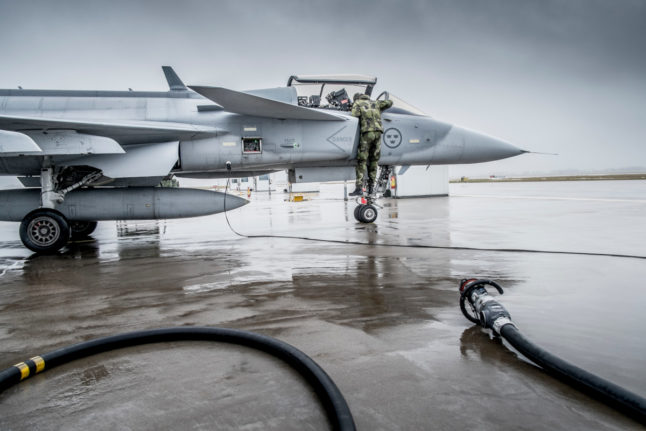Most of the exports went to European Union countries and 39 countries which Sweden cooperates with, the Swedish Inspectorate for Strategic Products (ISP), a government agency, said in a statement.
Sweden has a growing defence industry with Saab making the Gripen fighter jet, the Global Eye surveillance aircraft and anti-tank weapons.
“The degradation of the security situation and the continuing rearmament in the world means that the Swedish defence industry can expect many orders for a long time,” said ISP director general Carl Johan Wieslander in a statement.
“Swedish military equipment is attracting great interest, particularly in Ukraine,” he added.
Turkey also benefited from Swedish arms, according to ISP, with exports in 2023 worth four million kronor (356,000 euros).
In 2019, Stockholm introduced restrictions on arms sales to Ankara in response to Turkey’s military incursion into Syria.
The embargo was lifted following negotiations between the two countries during Sweden’s Nato accession process.
“The resumption of arms exports to Turkey clearly shows that Sweden places greater importance to Nato membership than to respecting human rights, democracy and international law,” said the peace and disarmament NGO Svenska Freds in a statement.
“The arms industry wants to present itself as a contributor to freedom and democracy, but Swedish arms companies also export (their products) to undemocratic regimes, countries that violate human rights and international law,” the NGO added.
People in these countries “pay a high price” for flourishing arms industry, it said.
The top 10 destinations for Swedish arms exports in 2023:
United States: 3,467 million kronor
Brazil: 2,798 million kronor
Pakistan: 1,573 million kronor
United Kingdom: 1,507 million kronor
Germany: 951 million kronor
Hungary: 946 million kronor
India: 704 million kronor
Norway: 634 million kronor
France: 532 million kronor
Czech Republic: 488 million kronor



 Please whitelist us to continue reading.
Please whitelist us to continue reading.
Member comments